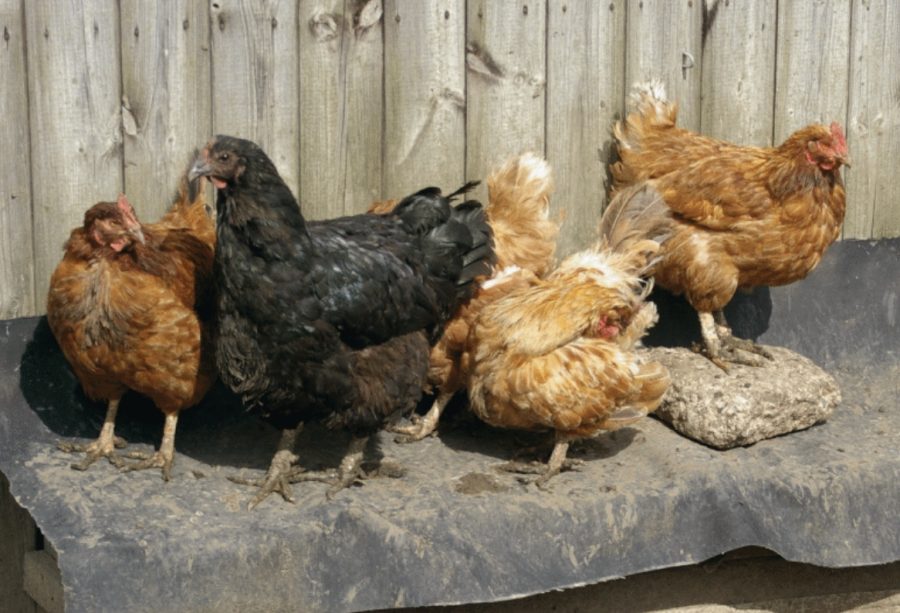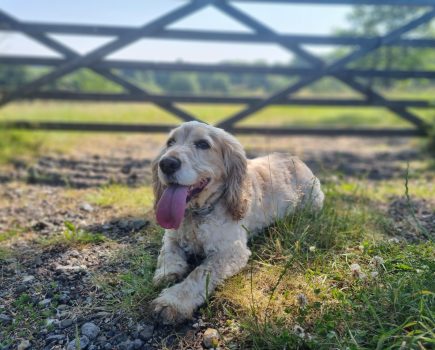Poultry vet, David Parsons, looks at the importance of keeping the chicken coop and in turn, your feathered friends, dry and healthy in wet conditions.
Water is essential to life. Unfortunately, vast quantities can be life threatening for plants and animals, including birds. This is not just the direct effects, drowning, but the secondary results from consistently wet skin and feathers. Both these protective layers will have had their function compromised and bacteria in dirt that are not normally a problem can cause skin infections and potentially death.
Providing your flock has housing that is dry and then your birds will largely take care of themselves. If however, your housing has not been suitably waterproofed, resulting in a damp atmosphere and wet bedding then beware. Infections entering through soft damp skin on the foot pad, between the toes, hock and breast are likely. If you wait until you see obvious signs of lameness then it will be too late. Pick up and examine your flock especially those with feathery feet and legs. Check for reddening of the skin, feather loss, crusting and scabs on the skin. If mild, cleaning and antiseptic cream may suffice. If not, it is a trip to the vet. Both will only work providing the housing is dry.
IT TAKES BODY ENERGY TO DRY FEATHERS
Wet feathers on hens in a cold damp house will also result in significant heat loss from your hen. No surprises here. How will the feathers dry? Heat and warmth will dry them out. This is fine if they are out in the sunshine after a downpour. It may be old age but I can really feel the difference in temperature when walking from sunlight to shade in the winter. Your hens will notice the same. Sunbathing in the winter sun is so enjoyable. What happens if your feathers are wet at dusk? You go into your damp cold house with your damp flock mates and perch. The only way that feathers will dry out is from body heat. Wet and damp feathers provide very poor insulation from the nighttime cold. Yet when you see your flock next morning, feathers will be dry and plumage tidy. Body heat has dried these feathers. To dry out and keep warm your birds will have burnt more body reserves especially fat.
RISK OF RESPIRATORY DISEASE
A potential compounding problem is respiratory disease that will also be more likely in flocks in cold damp surroundings.The immune response that keeps these infections under control requires large amounts of energy. With luck the most you will see is one with a runny nose or weepy eye.
However, over time the combination of a damp, cold environment with a low-grade respiratory infection could result in loss of body condition and worsening of the respiratory disease. Whether or not your hens are laying may make the problem worse. The modern hybrids have been selected to lay more eggs very often at the expense of body condition. You might think that under adverse conditions the hen would stop laying. She will stop laying but the problem is that she may well have compromised her own wellbeing before she stops laying and is no longer capable of recovery.
AND WHAT ABOUT THE HUMAN?
Lastly, there is the problem of this cold, wet and windy weather on you the flock owner. It is not much fun being outdoors.Yet the poultry house still needs to have the muck removed and the nest boxes cleaned. Not that dirty, you think. They will be alright for another day. Then it is just as miserable the next day and the day after that. Now we have cold, damp and dirty. Of course, this is a worse case scenario which does not apply to most.
Do things right and you will reap the rewards of happy hens, good quality eggs and healthy chicks.
This article originally appeared in the April 2024 issue of The Country Smallholder magazine. To receive regular copies of The Country Smallholder magazine featuring more articles like this, subscribe here.
For FREE updates from the world of smallholding, sign up for The Country Smallholder newsletter here.








